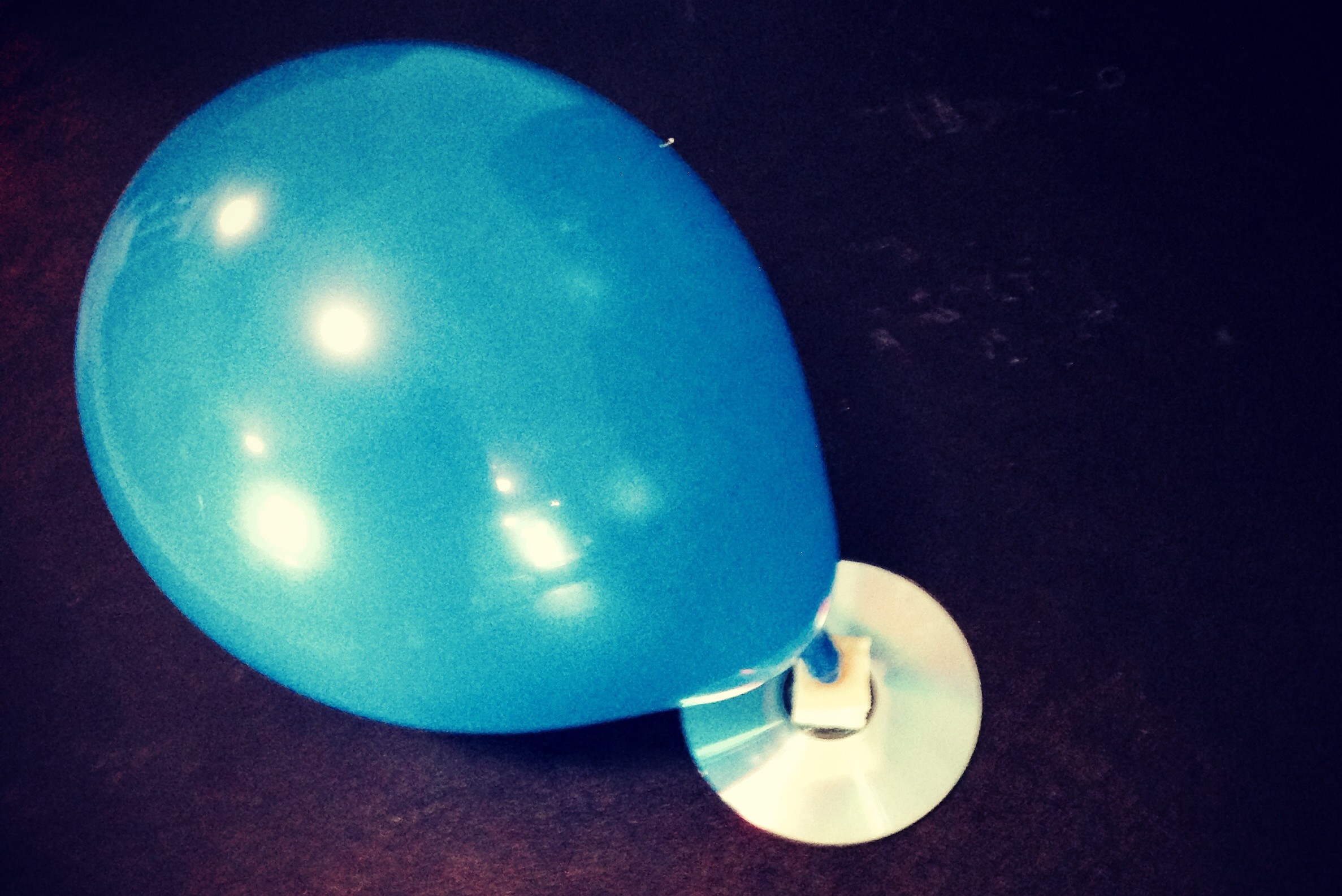CD hovercrafts
Since the 9-10 kids have been playing around a lot with the hair dryer and balloon, doing little air pressure experiments, I thought I'd leave them a challenge: let's make a hovercraft.

I told them the basic idea of a hovercraft is to have a bed of air under the hovering object, like on an air hockey table. Then they spent half an hour inventing various potential solutions.
At the next class, I showed them my working hovercraft.
And told them they could build theirs based on mine. This is the preferred way of doing things in this class, since invention is the name of the game.
To build my model you: Cut one small straw into two shorter pieces (a larger straw would work delightfully to provide enough air pressure, but we always use small ones. Plus, this way there was the inevitably-tested question of why I used two straws instead of one...). Take a small piece of dry kitchen sponge and use scissors to cut a whole just large enough for the straws to fit through. Hot glue sponge to CD, so the holes of both are centred (if there is a more solid side, glue that part to the CD). Put straws through hole, so air passes through easily. They should be pretty snug, but don't glue them in place. Attach a balloon to the straws on the flat side of the CD(the side that the sponge isn't on) using elastics. Remember to make sure air can still flow through. Blow up the balloon using the straws. Push the straws back so they are even with the flat side of the CD, place on flat surface and release. PBS also has a guide using styrofoam and tape, that will help you see how this all comes together.
Other class variations included using up to 8 straw sections, adding decorative glue (not super successful), using several balloons, super tall straw sections, and more.
[faq-toggle title="These hovercrafts aren't floating, they're sliding on the table!"]So some of the kids didn’t think these were really hovercrafts, since they aren’t visually “hovering”. In fact, the reason they slide so smoothly is they are effectively hovering just above the table, on a thin bed of air. To achieve this, we need the balloon to push out enough air to lift the hovercraft just off the ground. As soon as the balloon runs out of air, the hovercraft connects with the table’s surface and friction stops it from sliding around easily. [/fag-toggle]






